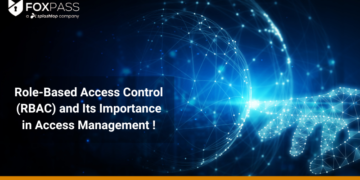In today’s digital world, keeping data secure is of utmost importance. Organizations need reliable methods to control access to their sensitive information. Role-Based Access Control (RBAC) has become a widely adopted approach for managing access within organizations. In this blog post, we will explore the concept of RBAC, its benefits, and why it plays a crucial role in maintaining a secure and well-organized system.
What is Role-Based Access Control (RBAC)?
Role-Based Access Control (RBAC) is a method that helps organizations manage and control access to resources based on users’ roles. It provides a structured approach to defining, assigning, and managing user permissions, ensuring that users have access only to the resources necessary for their specific roles and responsibilities.
How does RBAC work?
RBAC works by assigning permissions to roles instead of individual users. Here are the key components of RBAC:
Roles: Roles represent different job functions or responsibilities within an organization. For example, there can be roles for administrators, managers, or regular employees. Each role is associated with a set of permissions that define the actions users can perform.
Permissions: Permissions define the actions or operations that users can perform within a system. These permissions are associated with specific roles and can include activities like reading, writing, deleting, or executing. By assigning permissions to roles, access management becomes more structured and easier to manage.
Users: Users are individuals who are assigned specific roles within the RBAC system based on their job functions and responsibilities. When a user is assigned a role, they inherit the permissions associated with that role.
Access Control Policies: RBAC utilizes access control policies to govern the interactions between roles, permissions, and users. These policies specify the rules and conditions for granting or denying access to resources. Access control policies ensure that users can only perform actions associated with their assigned roles, reducing the risk of unauthorized access.
Benefits of RBAC:
Implementing RBAC offers several benefits to organizations:
Improved Security: RBAC follows the principle of least privilege, granting users access only to the resources required for their roles. By limiting access to sensitive information, organizations can mitigate the risk of data breaches and unauthorized access.
Simplified Administration: RBAC simplifies user access management by centralizing permissions and role assignments. With RBAC, administrators can define and modify roles, add or remove users from roles, and adjust permissions as needed. This centralized approach reduces administrative complexity and streamlines access control processes.
Enhanced Productivity: RBAC streamlines access management, enabling users to quickly and efficiently access the resources they need to perform their roles. Users don’t need to waste time seeking permissions individually, as their access is already defined by their assigned roles. This streamlined process improves productivity and allows employees to focus on their core responsibilities.
Compliance and Auditing: RBAC facilitates compliance with regulatory requirements by providing a structured approach to access control. Organizations can demonstrate proper access controls, which is essential for meeting industry standards and regulations. RBAC also enables organizations to generate audit trails, allowing for better accountability and monitoring of access activities.
Implementing RBAC:
To implement RBAC effectively, organizations should follow these steps:
Role Identification: Identify the various roles within the organization based on job functions and responsibilities. Consider the specific access requirements for each role.
Permission Assignment: Define the permissions required for each role to fulfill their tasks effectively. Assign permissions that align with the responsibilities and functions of each role.
Role-User Mapping: Assign users to specific roles based on their job functions and responsibilities. Regularly review and update role assignments as organizational needs evolve.
Regular Review: Regularly review and update role assignments to ensure they align with the evolving needs of the organization. Conduct periodic audits to verify that access controls are functioning as intended.
Role-Based Access Control (RBAC) is a powerful method for managing user access to resources within organizations. By implementing RBAC access control, organizations can enhance security, simplify administration, and ensure compliance with regulatory requirements. RBAC follows a structured approach, assigning permissions to roles rather than individual users, which results in improved efficiency and reduced administrative burden. As the digital landscape continues to evolve, RBAC remains a critical component of a comprehensive access control strategy, protecting sensitive information and fostering a secure operating environment. Implementing RBAC is a proactive step towards ensuring data security and maintaining control over access to valuable organizational resources.












































